Week 133_Fake Plastic Forevers & Detournement of Digital Colonialism
Fake plastic forevers & detournement of digital colonialism
Curated by Juan Covelli
Full Moon August 26st, 2018
internetmoongallery.com/archive/JuanCovelli/Fakeplastic.html

Fake plastic forevers, curated by Juan Covelli, is new reiteration of his previous internet based work Speculating the Fragmented Copy, created for the web residency at Akademie Schloss Solitude & ZKM | Center for Art and Media, where he released 14 high definition 3D scans from Mesoamerican archaeological artifacts that he scanned from the Stavenhagen Collection -CCU Tlatelolco in Mexico.
Covelli has commissioned 6 artists to revisit his digital archive to create new work using the 3D models, to give the 2,000-year-old archaeological treasures a new digital life. The 3D scans presented are freed from physical matter, an illusion of sorts. Translated to a new dimension and language, which is not made of tangible material, their components are zeroes and ones, without dimension. The new artifacts are algorithmic calculations, released from the museum and its geographical limitations; now they are coming back to the people. Not bound by the original, the digitalized objects can become forever multiple, forever fluid. The project is part of a current open source countermovement against museums and tech companies such as Google who are also digitizing cultural heritage for creative re-use, but often just reproduce tactics of traditional colonialism due to closed and controlled production environments.
The works here presented are posing difficult questions about archiving, ownership, and the bias of interpretation in the digital world. What happens as we increasingly digitize our physical life; how is culture and ownership present in this malaise?

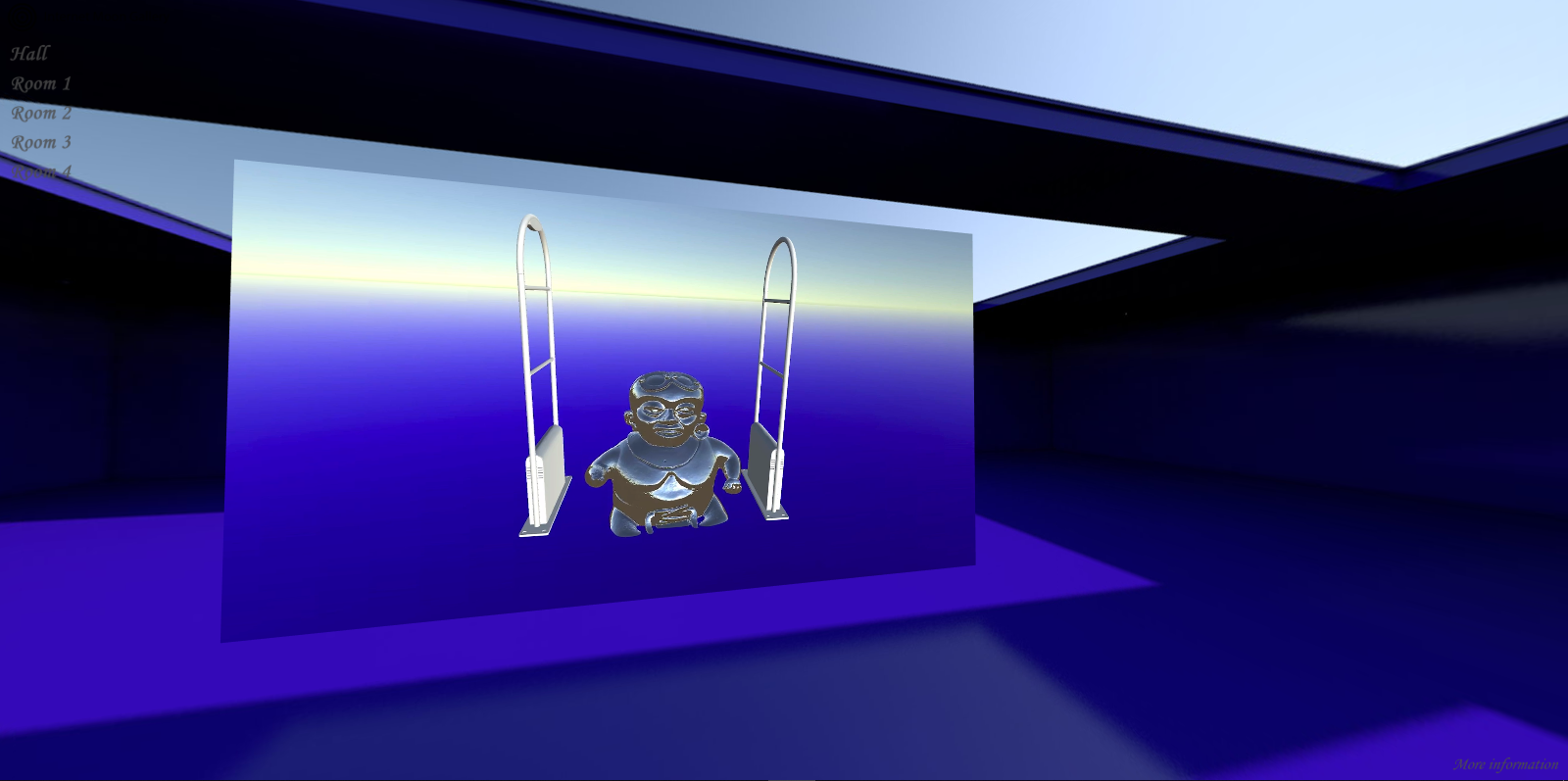

The new video piece ‘Shipment Lost at Sea’ by Leá Porré is a hyperreal narrative where the artifacts are lost at sea during their colonial journey to the West. It portrays an exhibition that will never open and aims to highlight this process of de- contextualisation as a profoundly violent one, a brutal shipwreck. It echoes the slave- trading practice of throwing slaves overboard into deep sea, from which ensued a myth that seas were haunted by floating remnants of survivors. The video displays this fragmented sunken history, where the artefacts form an alternative reality of surviving in a borderless space, never reaching their destination nor returning to their point of origin.
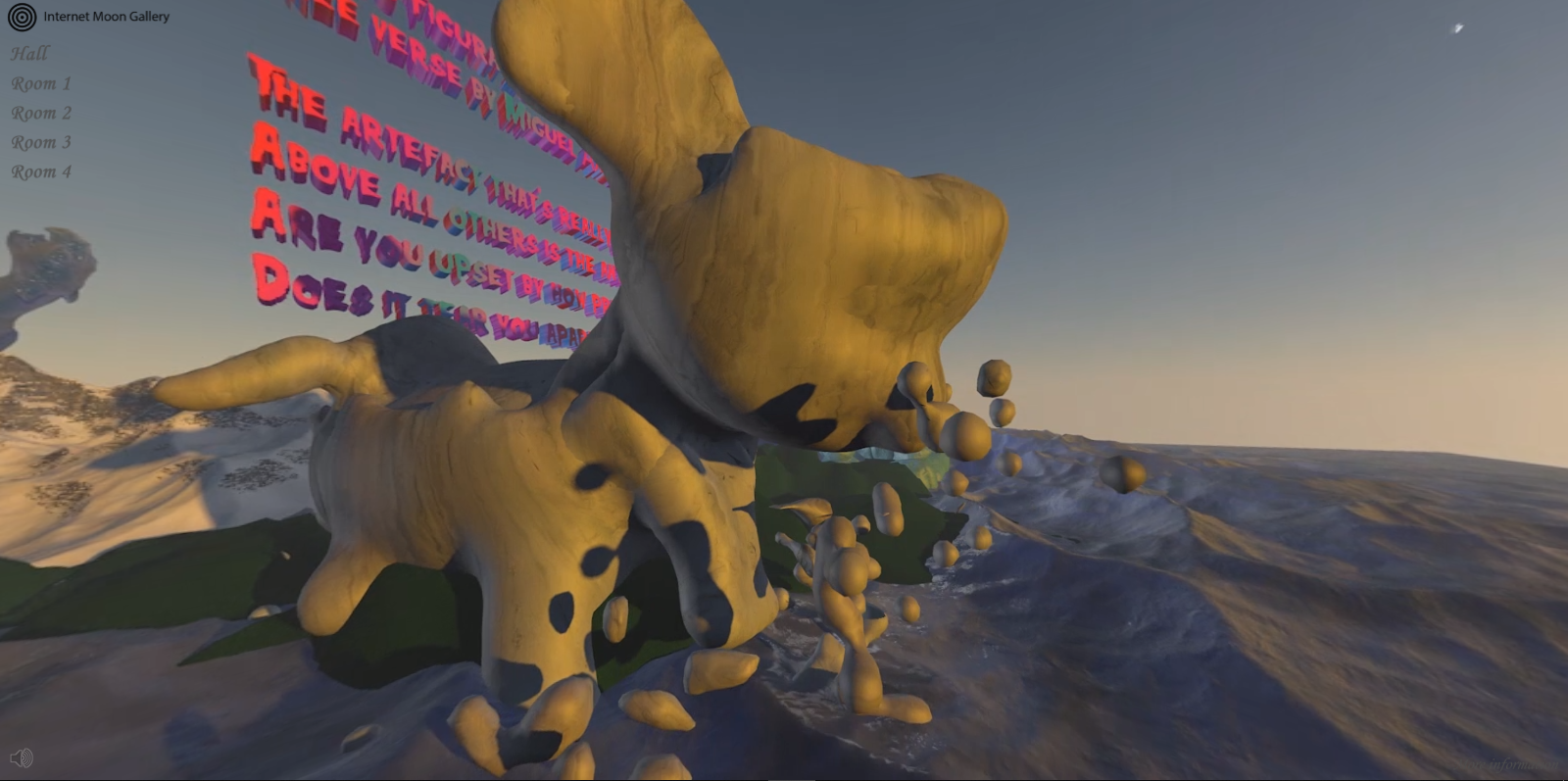


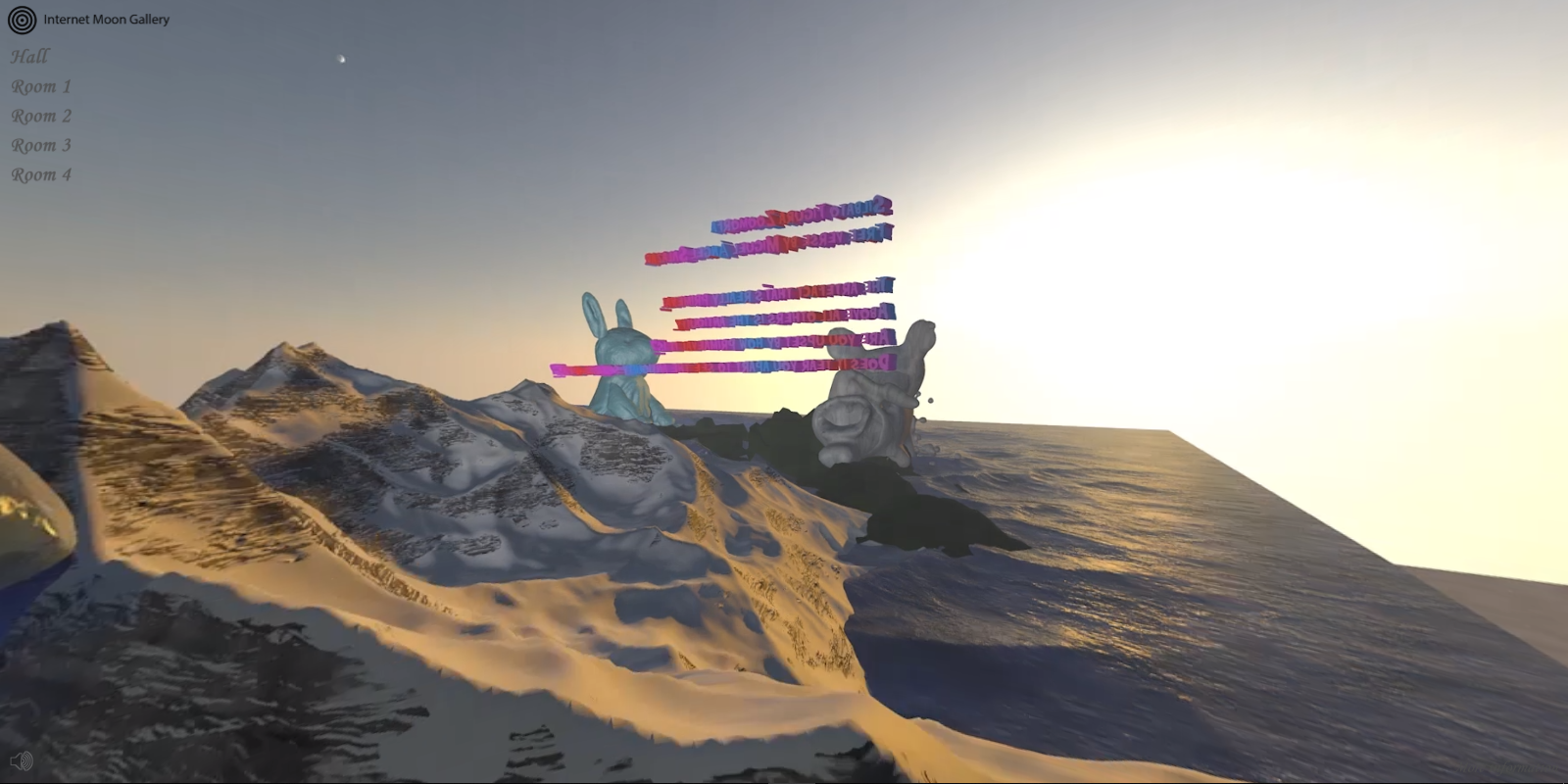
Miguel Ángel Salazar presents the artificial 3D landscape “Silbato Figura Zoomorfa”. For Salazar, the act of scanning a personal object is a way of preserving a memory; in a way, the 3D scan becomes a possibility, a hybrid state, that inhabit a space between presence and disappearance. The reproduction of these models in different landscapes will give the false idea of preserving the memory of these objects; it gives them a sense of survival, extending their life as long as they continue to circulate. The Landscape itself is based on a verse created by a captionbot or machine learning text generator. This way, Salazar gives the creation agency to the machine, so it can create a new memory about the objects he encounters.

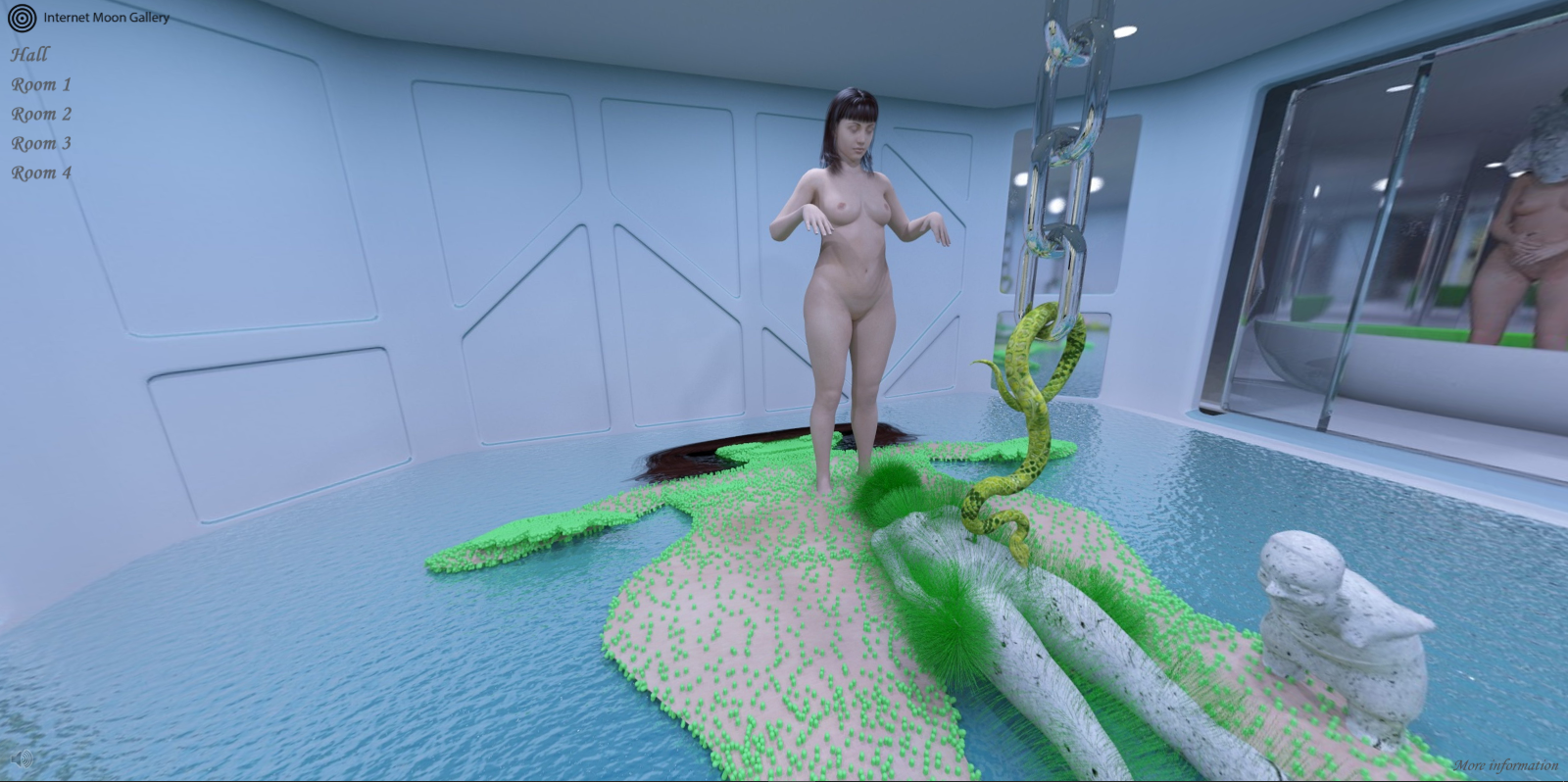

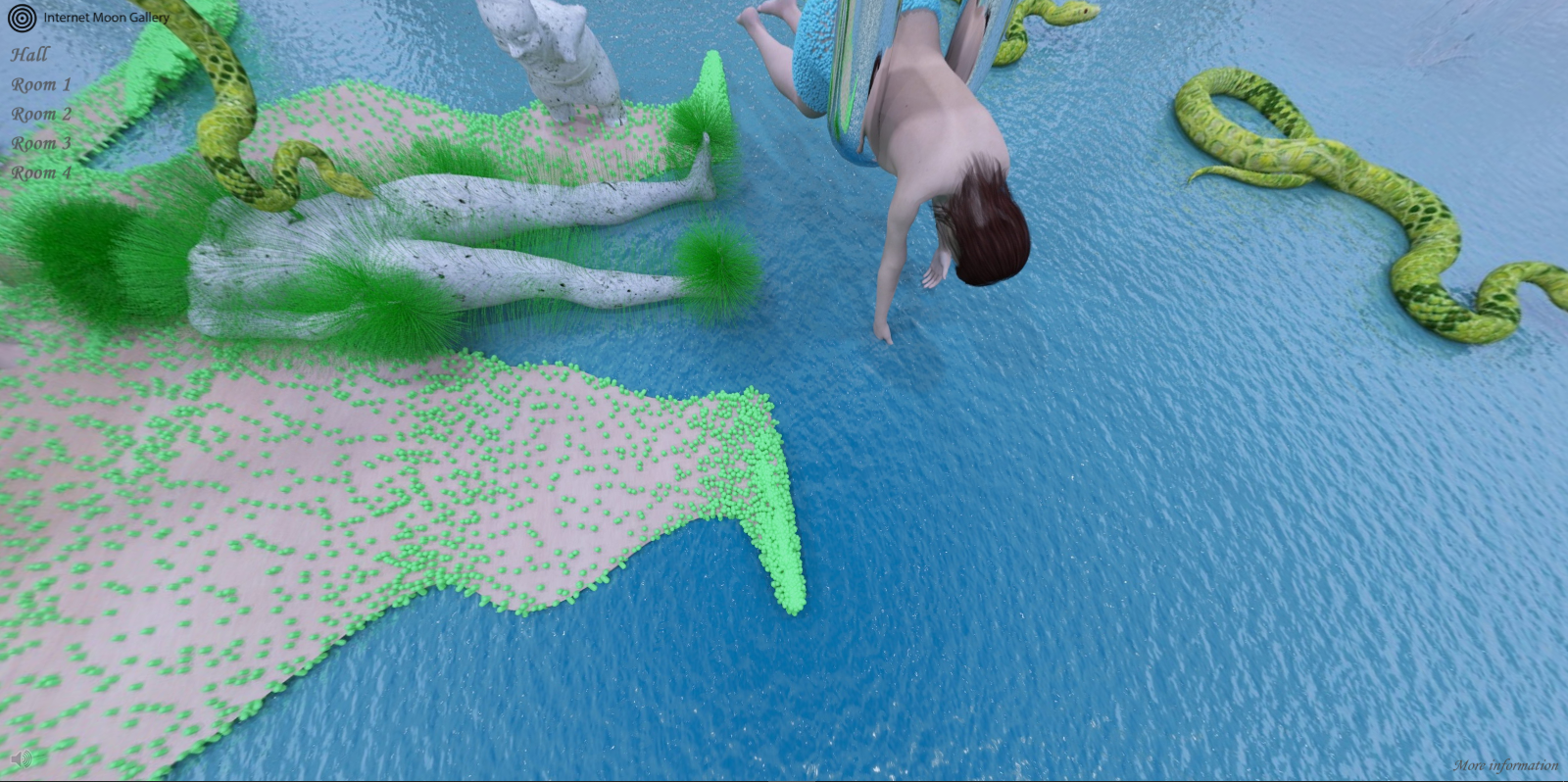
Olga Mikh Fedorova’s room, titled “compulsion”, is a dystopian world where men have left women, and they are visited only by Mesoamerican millenarian Gods to help them sometimes. This room evokes a surreal, uneasy, dreamlike state that feels both familiar and alien.
Neale Willis sound pieces accompany both works by Fedorova and Salazar. Unlike the other artist invited for the show, he is not interested in the visual representation of the 3D scans, but in the stream of data created by the digital files. A piece of bespoke software was used to generate phonemic text from this data source, and when read through by a speech synthesiser, a strange almost language emerges from the jumble of numbers. Passing this through voice recognition software yields unexpected results as the artificial intelligence behind these pieces of software attempts to make sense of what is being spoken. By repeating the process using transcription applications and tidal cycles, often vastly different outcomes are achieved. What results is often a strange Dadaist almost poetry as the machine tries to make input tailored for machines into something understandable for humans.
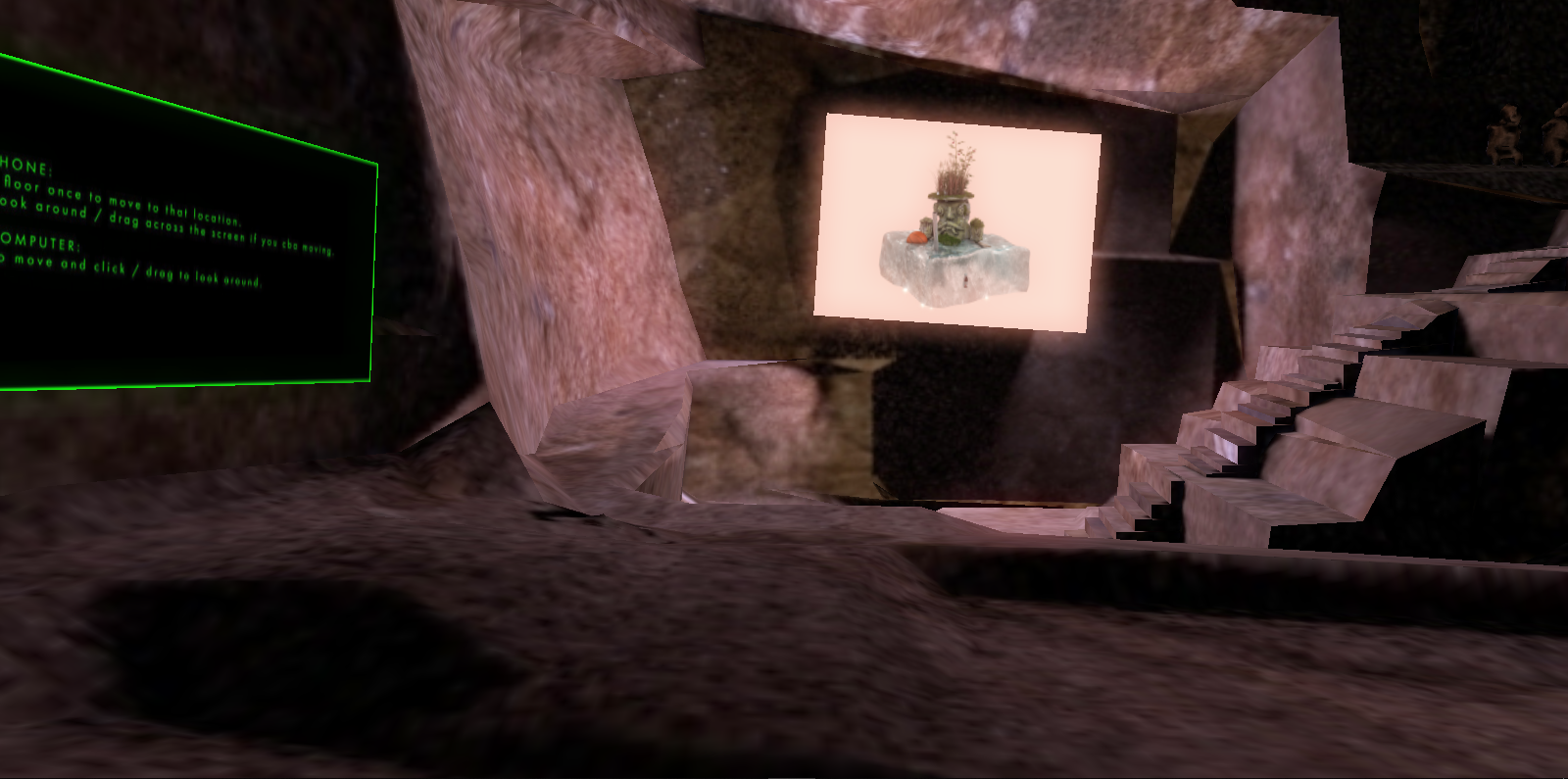

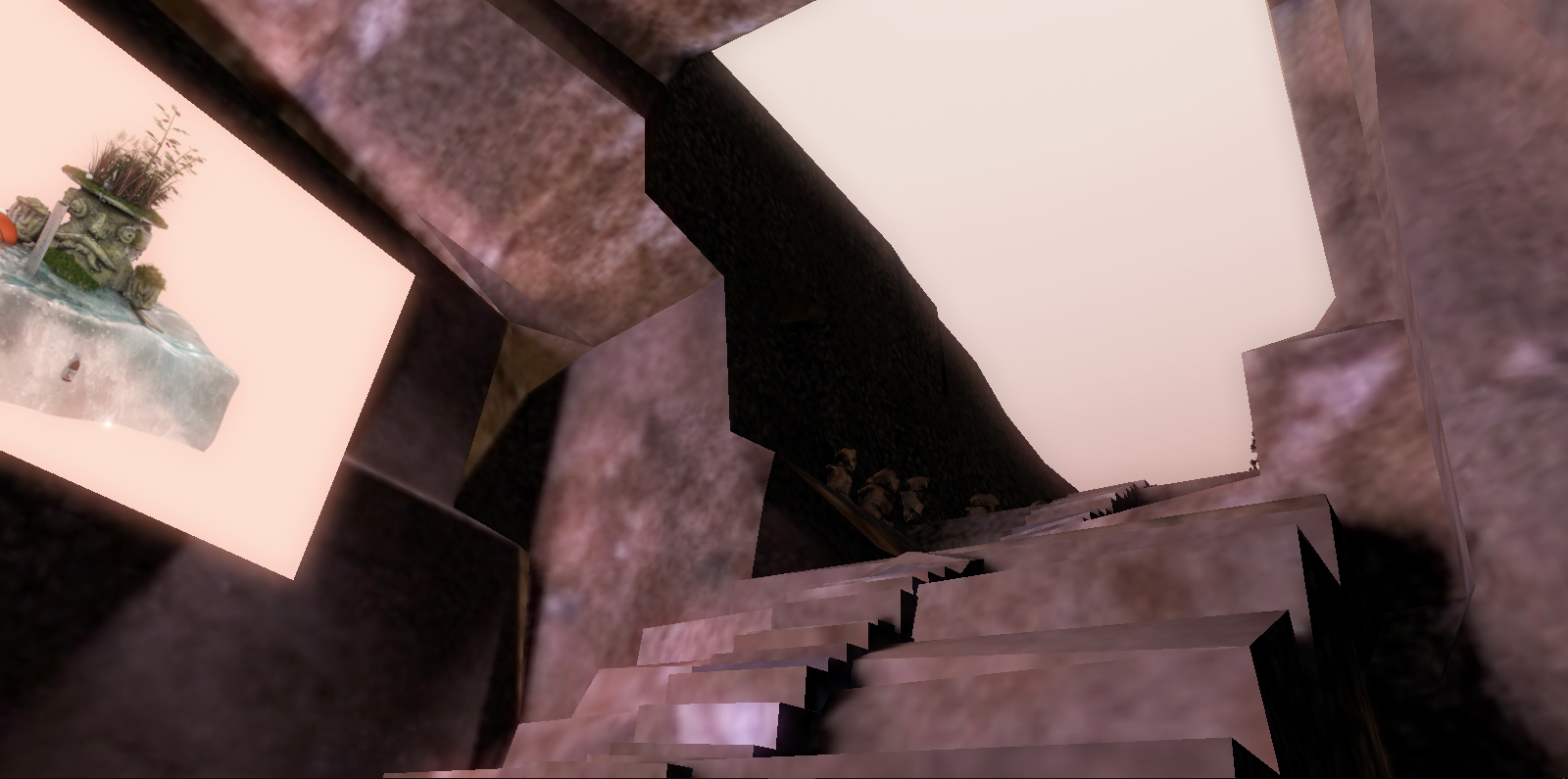

Yuma burgess immersive piece Without Within, is a source code for a first-person game like experience, coded and designed by the artist. Using the latest technology, he models and creates his worlds using VR modelling tools. Based on fractal theory, and mimicking a Hindi like temple, Burgess presents us a dystopian world where fractal repetition becomes difference. His works also becomes a vessel within a vessel that houses works by Nabbteeri and Covelli.
The Finnish duo Nabbterri present us with a single image called “The Vessel”. A work that is depicting the Teotihuacan rain and storm god Tláloc, the one said to be making things sprout. In the dystopic rendering that mimics a cross-section diagram of water's life-giving qualities combined with uncomfortable, destructive elements. The composition consists of a banal urban readymade collection of free downloadable 3D objects, serving to decontextualize the ancient artifacts, converting it to a common urban everyday decayed statue.
Words by Juan Covelli.